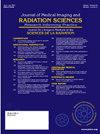医学影像中的人工智能教育:范围综述。
IF 1.3
Q3 RADIOLOGY, NUCLEAR MEDICINE & MEDICAL IMAGING
Journal of Medical Imaging and Radiation Sciences
Pub Date : 2024-12-22
DOI:10.1016/j.jmir.2024.101798
引用次数: 0
摘要
背景:人工智能(AI)的兴起正在重塑医疗保健,尤其是医学成像领域。在这一新兴领域,临床成像人员需要适当的培训。然而,医学课程中缺乏正式的人工智能教育,同时也缺乏综合为临床成像人员量身定制的人工智能课程的研究。因此,这项研究解决了“目前临床成像人员的人工智能培训计划或课程是什么?”方法:本综述遵循Arksey & O'Malley的框架和PRISMA扩展范围综述清单。在2023年6月至9月期间检索了6个电子数据库,筛选过程分为两个阶段。使用标准化图表形式进行数据提取。数据以表格形式按主题汇总。结果:本综述纳入了22项研究。该课程的目标包括通过提供教育内容来增强人工智能知识,并鼓励人工智能的实际应用和技能发展。学习目标包括技术熟练程度和模型开发,基础知识和理解,文献综述和信息利用,以及实际应用和解决问题的技能。课程内容涵盖9个领域,从人工智能基础到成像信息学。大多数课程采用在线交付模式,课程持续时间差异很大。所有的课程都采用说教式的演讲,其中一些结合了额外的教学方法和活动来实现课程目标。目标受众和参与者主要是放射科住院医师,而创作者和讲师则由放射科和人工智能人员组成的多学科团队。使用了各种工具和资源,包括在线课程和基于云的笔记本。课程受到参与者的好评,时间限制成为一个主要挑战。结论:这篇范围综述从现有文献中概述了人工智能教育计划,以指导人工智能教育课程的未来发展。未来的教育工作应该优先考虑基于证据的课程设计,扩大对放射技师的培训,增加成像信息学的内容,并有效地利用课程中的不同教学策略和培训工具和资源。本文章由计算机程序翻译,如有差异,请以英文原文为准。
Artificial intelligence education in medical imaging: A scoping review
Background
The rise of Artificial intelligence (AI) is reshaping healthcare, particularly in medical imaging. In this emerging field, clinical imaging personnel need proper training. However, formal AI education is lacking in medical curricula, coupled with a shortage of studies synthesising the availability of AI curricula tailored for clinical imaging personnel. This study therefore addresses the question “what are the current AI training programs or curricula for clinical imaging personnel?”
Methods
This review follows Arksey & O'Malley's framework and the PRISMA Extension for Scoping Reviews checklist. Six electronic databases were searched between June and September 2023 and the screening process comprised two stages. Data extraction was performed using a standardised charting form. Data was summarised in table format and thematically.
Results
Twenty-two studies were included in this review. The goals of the curriculum include enhancing AI knowledge through the delivery of educational content and encouraging practical application and skills development in AI. The learning objectives comprise technical proficiency and model development, foundational knowledge and understanding, literature review and information utilisation, and practical application and problem-solving skills. Course content spanned nine areas, from fundamentals of AI to imaging informatics. Most curricula adopted an online mode of delivery, and the program duration varied significantly. All programs utilised didactic presentations, with several incorporating additional teaching methods and activities to fulfil curriculum goals. The target audiences and participants primarily involved radiology residents, while the creators and instructors comprised a multidisciplinary team of radiology and AI personnel. Various tools and resources were utilised, encompassing online courses and cloud-based notebooks. The curricula were well-received by participants, and time constraint emerged as a major challenge.
Conclusion
This scoping review provides an overview of the AI educational programs from existing literature to guide future developments in AI educational curricula. Future education efforts should prioritise evidence-based curriculum design, expand training offerings to radiographers, increase content offerings in imaging informatics, and effectively utilise different teaching strategies and training tools and resources in the curriculum.
求助全文
通过发布文献求助,成功后即可免费获取论文全文。
去求助
来源期刊

Journal of Medical Imaging and Radiation Sciences
RADIOLOGY, NUCLEAR MEDICINE & MEDICAL IMAGING-
CiteScore
2.30
自引率
11.10%
发文量
231
审稿时长
53 days
期刊介绍:
Journal of Medical Imaging and Radiation Sciences is the official peer-reviewed journal of the Canadian Association of Medical Radiation Technologists. This journal is published four times a year and is circulated to approximately 11,000 medical radiation technologists, libraries and radiology departments throughout Canada, the United States and overseas. The Journal publishes articles on recent research, new technology and techniques, professional practices, technologists viewpoints as well as relevant book reviews.
 求助内容:
求助内容: 应助结果提醒方式:
应助结果提醒方式:


